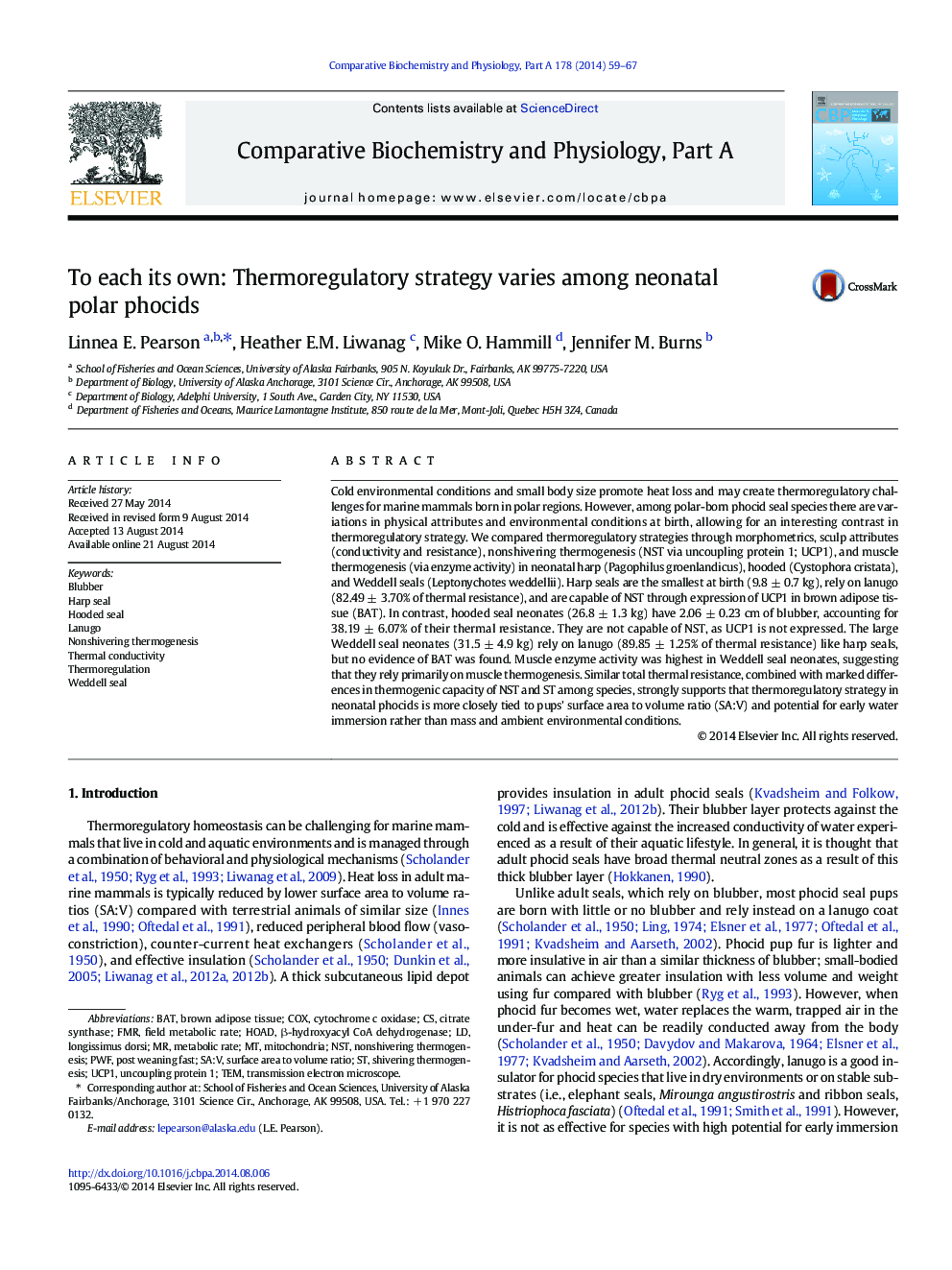| Article ID | Journal | Published Year | Pages | File Type |
|---|---|---|---|---|
| 1972168 | Comparative Biochemistry and Physiology Part A: Molecular & Integrative Physiology | 2014 | 9 Pages |
Cold environmental conditions and small body size promote heat loss and may create thermoregulatory challenges for marine mammals born in polar regions. However, among polar-born phocid seal species there are variations in physical attributes and environmental conditions at birth, allowing for an interesting contrast in thermoregulatory strategy. We compared thermoregulatory strategies through morphometrics, sculp attributes (conductivity and resistance), nonshivering thermogenesis (NST via uncoupling protein 1; UCP1), and muscle thermogenesis (via enzyme activity) in neonatal harp (Pagophilus groenlandicus), hooded (Cystophora cristata), and Weddell seals (Leptonychotes weddellii). Harp seals are the smallest at birth (9.8 ± 0.7 kg), rely on lanugo (82.49 ± 3.70% of thermal resistance), and are capable of NST through expression of UCP1 in brown adipose tissue (BAT). In contrast, hooded seal neonates (26.8 ± 1.3 kg) have 2.06 ± 0.23 cm of blubber, accounting for 38.19 ± 6.07% of their thermal resistance. They are not capable of NST, as UCP1 is not expressed. The large Weddell seal neonates (31.5 ± 4.9 kg) rely on lanugo (89.85 ± 1.25% of thermal resistance) like harp seals, but no evidence of BAT was found. Muscle enzyme activity was highest in Weddell seal neonates, suggesting that they rely primarily on muscle thermogenesis. Similar total thermal resistance, combined with marked differences in thermogenic capacity of NST and ST among species, strongly supports that thermoregulatory strategy in neonatal phocids is more closely tied to pups' surface area to volume ratio (SA:V) and potential for early water immersion rather than mass and ambient environmental conditions.
